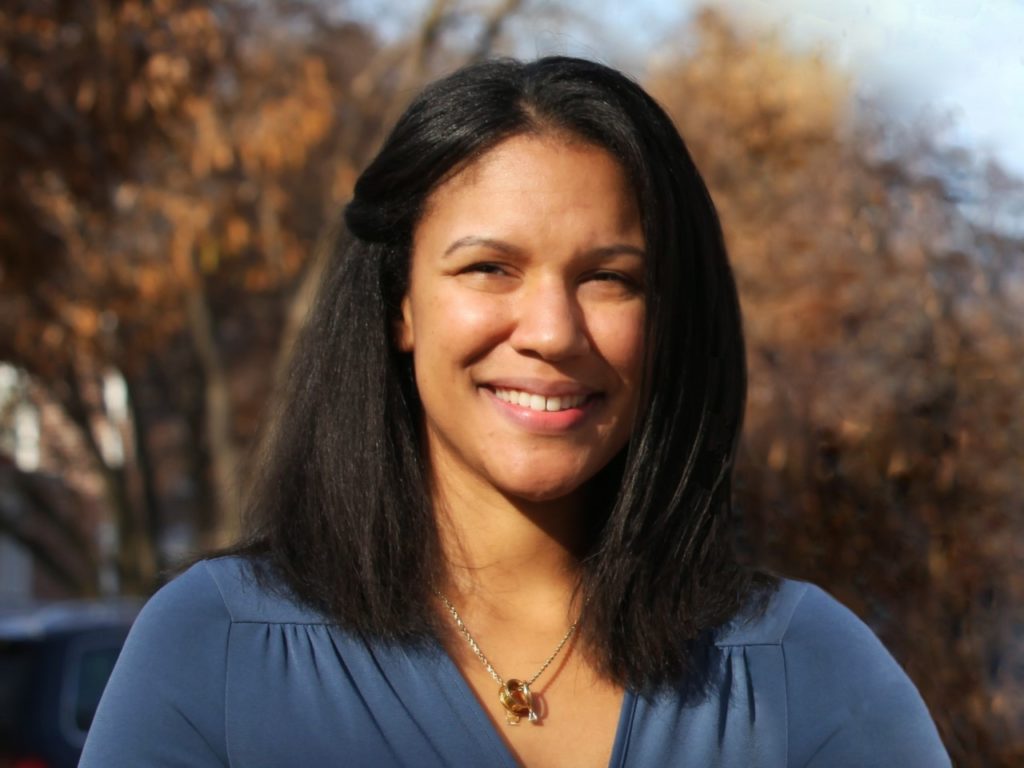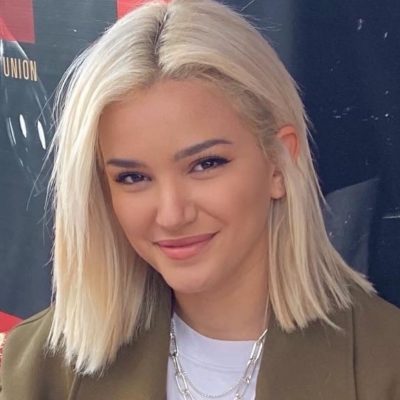
The virtual panel “Teaching with Sound / Sound and Pedagogy,” as part of SpokenWeb’s Listening, Sound, Agency Symposium, brought together scholars on May 19, 2021, to exchange ideas involving sound within the educational context. One of them was Nicole Brittingham Furlonge, who took from her book Race Sounds to present the paper, “‘New Ways to Make Us Listen’: Exploring the Possibilities for Sonic Pedagogy.” During her presentation, Furlonge argued the political need for undivided disposition listening, particularly in relation to how we engage race, gender, and class differences. Calling the attention to “sound on the page,” Furlonge explained how texts can invite readers to go beyond scanning the words printed on a page by engaging themselves as fully sensing, listening beings — “not hearing beings,” she notes — absorbing ideas that might be overseen if they were simply reading.
I was excited to get in touch with Furlonge as her talk stood out to me as an essential discussion concerning the social and civic duties of listening in pedagogy. The following interview was conducted by email over the summer to learn more about Furlonge’s research and wider interests.
SR: Thank you so much for kicking off the Listening, Sound, Agency Symposium this year with a fascinating and important paper that emphasizes the need for intentionality behind listening. First, could you introduce yourself not only as a researcher but as a listener? What have you been listening to lately?
NF: I love this question! In my work with teachers, school leaders, and medical students, I’ve been weaving music into workshops and graduate classes. Recently, I’ve been listening to and playing in these sessions music by Alice Coltrane and Nina Simone:
SR: During your conference talk, you’ve introduced the expression “listening in print” to describe the listening practices that allow the page and the ear to inform each other’s potentialities. What sorts of tools would you suggest to those who wish to learn how to read as a listener?
NF: One of the ways I would encourage readers to develop their ear for the page is to shift their mindset and expectations around reading as a visual act. Part of the work is to reorient ourselves to the printed page, to think of it as a multisensory space. This idea of reading links back to griots and to oral storytelling traditions. But it also connects to reading culture in early modern England. In his work, scholar Bruce R. Smith reminds us that literacy hasn’t always been imagined or practised as merely visual. Unlike 21st century readers, readers in the early modern world heard sonic traces in illustrations, print, and handwriting. Smith terms the process of learning to hear and not just to see the page “unairing.” I think bringing listening to reading “unairs” or to call on our Zoom-ified world “unmutes” — print so that we can listen in print. Fred Moten also inspires my thinking here. He refers in his writing to an “ensemble of senses” from which listening emerges. Like Moten, I am interested in listening’s capacity to disrupt the traditional separation between acts of reading (highly visual and focused on the eye) and reception of orality (highly audible and focused on the ear). Writers create worlds that are meant to be engaged through a full imagined sensorium. Asking the question, “How might I read with an attention to sights, sounds, textures, smells?” can open up a world of listening while reading in print.
SR: You’ve encouraged students to think of printed words as sonic through exercises centring points of listening instead of points of view — which you’ve described as the sonic mandate of “show, don’t tell.” Could you tell us about your students’ responses to these exercises?
NF: At first my students — whether in high school, college, or graduate school — look at me with a bit of confusion. Then they open up to the idea that this might be interesting, that listening to the page might activate reading for them in a different way. It becomes a game of sorts, to playfully explore a printed page or text in ways that are unexpected. They are often surprised by how much more they perceive when they use their different senses, and especially try to listen, as they read. Of course, they also enjoy the challenge of writing their own essays or stories that aim to compel the reader to listen to their text in print. Engaging listening in perhaps unexpected ways opens possibility. My graduate students in Education Leadership begin to hear the possibility of listening in print when they think about their work in schools and the ways in which listening allows them to tune into their communities in ways that they miss when observing only through their eyes. What does the sonic life of a school reveal about the inclusiveness of that community? About how the community understands learning and thriving? For my medical students in my listening and Narrative Medicine course, how does listening tune them into a patient’s story more fully? How might listening open channels for care — or how is listening a form of care? What’s wonderful, too, is that students begin to understand and practice the idea that listening isn’t only an orientation outside ourselves. They begin to value the understanding of listening to one’s self as well.
SR: Your discussion amplified the political potential of teaching listening as a way to stretch one’s self forward. What responsibility do you believe schools hold in providing spaces and tools to listen for openness, inclusion and growth?
NF: I believe this is work that is core to what it means to learn in school. When thinking about this question, I’m reminded of this thought from bell hooks: “The classroom remains the most radical space of possibility in the academy.” The classroom is charged with change potential — in the students, in the world that the students contribute to. We have an ethical responsibility to cultivate listeners who can listen with, alongside, as, for, with nuance. If we want to prepare our students of all ages to contribute effectively, meaningfully in a democratic nation, a most valuable lesson would be to teach them how to listen.
SR: I’m curious as to how listening as a “third ear practice” has personally expanded your understanding of teaching possibilities?
NF: It’s something I’m thinking through currently, but I’ve started thinking about the design book “The Third Teacher” that explores classroom space and design as “teachers” that can transform learning if designed to do so. I’ve started thinking about the “third ear” for teachers — How do we tune into school and classroom as sonic environments? What would we perceive differently? How can educators tune to their students in ways that transform learning? I’m not sure where this idea will go, but I do believe that as much as we need to commit to educating students as listeners, it would be important for teachers to model and expand their — our -— capacities as listeners in order to cultivate and transform learning.
SR: Finally, how you would describe your experience at the Listening, Sound, Agency Symposium as a presenter, and as an attendee?
NF: I very much enjoyed participating in and being a part of what felt like a learning community. Not only were we afforded space to share and explore ideas in development, but we also were in a community where people felt genuinely committed to sound studies, to explore the power and possibilities in the sonic, and where we were interested in uncovering new possibilities for what it means to be involved in Sound Studies. I appreciate that learning and pedagogical practices were a robust part of our conversations.
You know, when I first started graduate school, I was told I could be a great teacher or a great scholar, but not both. That kind of thinking, that separation of spaces of inquiry, really does neither space any good. Listening stretches across such boundary drawing. Listening practices invite us to think in ways that open channels for inquiry, sonic play, wonder. To break down barriers and explore what might be possible otherwise. They invite us to practice how we might be better audiences for each other.
Nicole Brittingham Furlonge is professor and director of the Klingenstein Center, Teachers College Columbia University. A first-generation college student, Nicole earned her Ph.D. and BA in English from the University of Pennsylvania, and her M.A. from the University of Michigan. Prior to joining Teachers College, Nicole served as Director of Teaching and Learning at the Holderness School. She has taught English and served as English Department Chair and Director of Diversity at several independent schools, including St. Andrew’s School (Delaware), The Lawrenceville School, and Princeton Day School. Nicole is the author of Race Sounds: The Art of Listening in African American Literature. Her book explores listening as an essential interpretive and civic act. Nicole’s research examines the intersections between listening, cognitive neuroscience, social justice, and school leadership. She lives in New Jersey with her spouse, their three children, and their puppy.
This article is published as part of the Listening, Sound, Agency Forum which presents profiles, interviews, and other materials featuring the research and interests of future participants in the 2021 SpokenWeb symposium. This series of articles provides a space for dialogical and multimedia exchange on topics from the fields of literature and sound studies.
